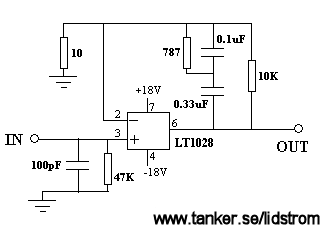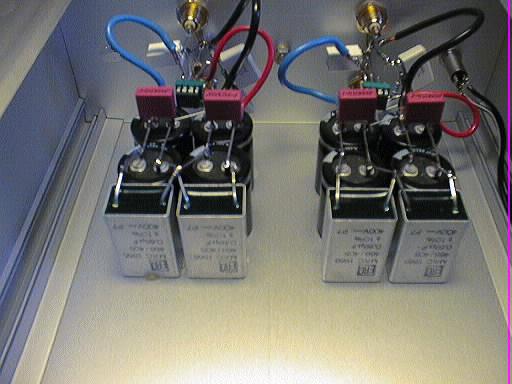Garbz
Headphoneus Supremus
- Joined
- May 19, 2004
- Posts
- 3,573
- Likes
- 14
I'm currently working on the El Cheapo preamp from DIY audio which has the following single opamp design:
http://www.diyaudio.com/forums/attac...amp=1077382697 for MM cartridges. And I ran into issues with the RIAA curve and with output caps.
First problem is the RIAA curve.
According to this site: http://www.euronet.nl/~mgw/backgroun...kground_1.html The ideal RIAA curve has the following values for a given frequency. My TINA SPICE simulation is to the right:
Code:
The problem with this is at the high end things are about 4dB above the desired value. My speakers are bright enough as it is without this boost in treble. Any clever ideas with the values in the feedback loop to fix this?
The other problem occures when I'll bias the opamp into class-A. Doing so causes DC on the output so I'll need to add DC blocking caps. I'd like to use things I have on hand and need help with values since I forgot how to calculate a low pass formula.
My amp's input impedance is 330kohm. I have on hand nice 1uf caps, nice 0.33uf caps, and worst comes to worst, 470uf BG electrolytics if it comes to it. So can I grab some insight or the RC high pass formula thanks.
http://www.diyaudio.com/forums/attac...amp=1077382697 for MM cartridges. And I ran into issues with the RIAA curve and with output caps.
First problem is the RIAA curve.
According to this site: http://www.euronet.nl/~mgw/backgroun...kground_1.html The ideal RIAA curve has the following values for a given frequency. My TINA SPICE simulation is to the right:
Code:
Code:
[left]Freq,---RIAA,---SPICE 20 +19.2 18.83 50 +17 16.29 100 +13 12.31 500 +2.7 +2.45 1k REF REF 2k -2.5 -2.83 5k -8 -8.13 10k -13 -11.73 20k -19 -14.56[/left]The problem with this is at the high end things are about 4dB above the desired value. My speakers are bright enough as it is without this boost in treble. Any clever ideas with the values in the feedback loop to fix this?
The other problem occures when I'll bias the opamp into class-A. Doing so causes DC on the output so I'll need to add DC blocking caps. I'd like to use things I have on hand and need help with values since I forgot how to calculate a low pass formula.
My amp's input impedance is 330kohm. I have on hand nice 1uf caps, nice 0.33uf caps, and worst comes to worst, 470uf BG electrolytics if it comes to it. So can I grab some insight or the RC high pass formula thanks.










